SHARES
| FacebookTwitter |
The Georgian Uprising on Texel (5 April 1945 – 20 May 1945) was an insurrection by the 882nd Infantry Battalion Königin Tamara (Queen Tamar or Tamara) of the Georgian Legion of the German Army (Wehrmacht Heer) stationed on the German-occupied Dutch island of Texel (pronounced Tessel). The battalion was made up of 800 Georgians and 400 Germans, with mainly German officers.
For five years it was as idyllic as war could be. But for the last six weeks – extending beyond the official end of the Second World War – it was bloody carnage. Those who were once comrades in uniform suddenly took to butchering one another in a conflict that has come to be called Western Europe’s last battle.
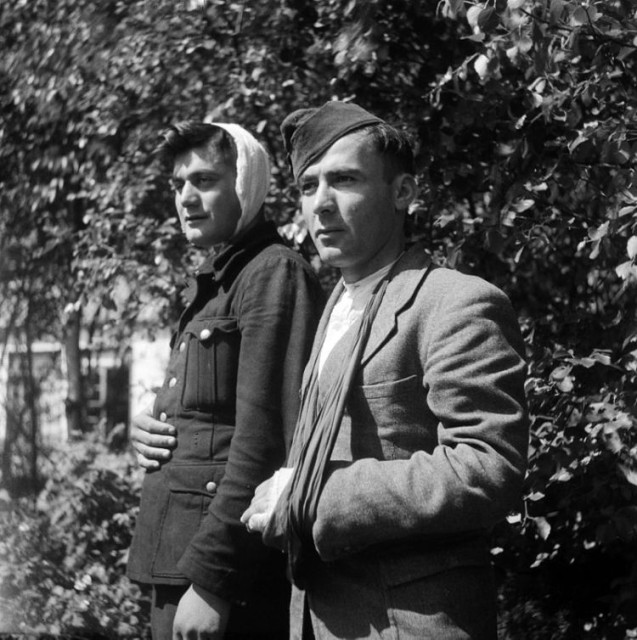 Two wounded Georgian soldiers at Texel in 1945 – By Vlis, J.A. van der / Anefo – Dutch National Archives, CC BY-SA 3.0
Two wounded Georgian soldiers at Texel in 1945 – By Vlis, J.A. van der / Anefo – Dutch National Archives, CC BY-SA 3.0The Georgians, captured earlier on the Eastern Front, were given a dismal choice. They could accept prisoner of war status with a future promising hunger, abuse and possible death, or they could enlist in the Wehrmacht. The choice of some 30,000 Georgians to don a German uniform was understandable but it made them traitors.
As the end of the war loomed, the Texel Georgians’ future looked bleak – a return to retaliation and punishment in the USSR. Fearing that fate, the members of the 822nd Battalion, having already replaced Soviet uniforms with German ones, changed their allegiance again, back to the Allied side.
The battalion had been formed at Kruszyna near Radom in occupied Poland in June 1943 and was used initially to fight partisans. On 24 August 1943 it was ordered to the West to relieve troops of theIndische Freiwilligen-Legion Regiment 950. The battalion arrived at Zandvoort in the Netherlands on 30 August.
From September 1943 to early February 1945 it was stationed at Zandvoort as part of the “Unterabschnitt Zandvoort”. On 6 February 1945 the battalion was posted to Subsection Texel. Preparations then started in late March 1945 for the transfer of several companies of the Georgian battalion to the Dutch mainland to oppose Allied advances, triggering the rebellion.
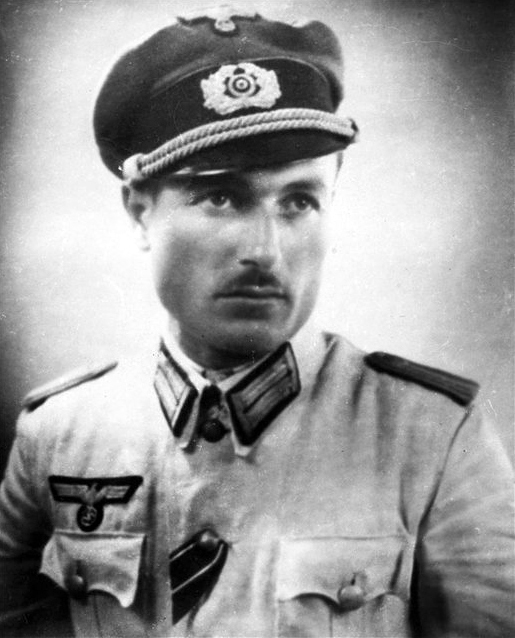 Shalva Loladze, the leader of the Georgian uprising
Shalva Loladze, the leader of the Georgian uprisingInside their barracks just after midnight on April 5th-6th, 1945, the Georgians turned on their German comrades, killing many of them with bayonets and knives in coordinated attacks. But some, including the commander, Major Klaus Breitner, who had spent the night with his mistress in the village of Den Burg, survived. Breitner and a few other German survivors were able to escape to the mainland.
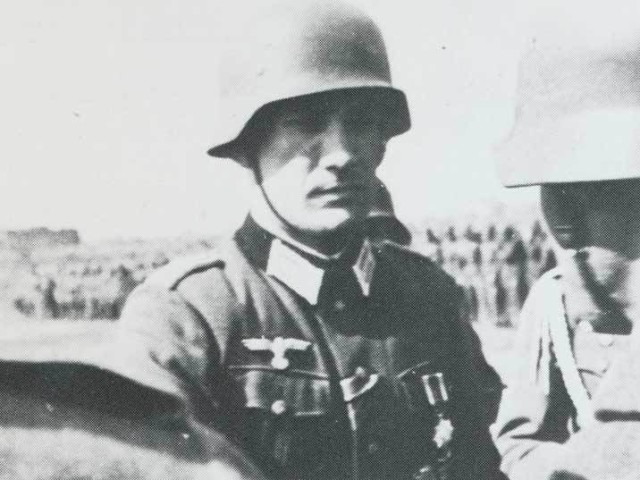 Klaus Breitner
Klaus BreitnerOn April 6th Breitner launched a counter-attack, having mobilized a force of 2,000 marines and members of the feared German SS. What had appeared to be a complete Georgian victory was quickly reversed. A house-to-house hunt for Georgians swept through Texel.
Captured Georgians, including 57 who finally surrendered control of the lighthouse where they had barricaded themselves, were forced to strip – their mutiny having disgraced their uniforms – and dig their own graves. Over 130 of them were executed in this gruesome fashion.
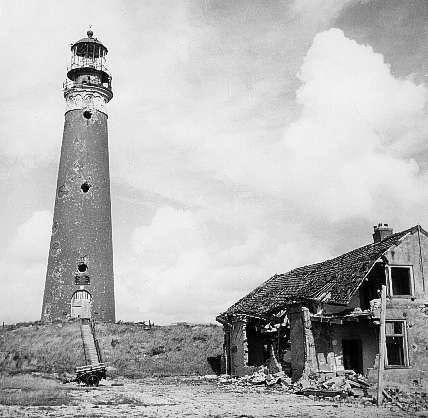 Damaged lighthouse on Texel
Damaged lighthouse on TexelTexel was turned into a scene of carnage that spared no one, including civilian Dutch inhabitants. Resistance forces and ordinary citizens who sheltered and helped the Georgians were executed, and the villages of Den Burg and Eierland saw serious damage to homes and buildings as the Germans exacted their revenge. ‘Texel is under a reign of terror,’ wrote one Texeler.
Even the surrender of German forces throughout the Netherlands on May 5th and the official end of the war on May 8th brought no end to the slaughter, as the German execution campaign continued for almost two more weeks. The death toll in the six-week battle was 812 Germans, 565 Georgians and 120 Dutch.
Throughout the nightmare, Texel received no Allied assistance. Only on May 20th was a small unit of the Canadian First Army sent to the island to negotiate an end to the conflict.
The Canadian commander on the scene was so impressed by the Georgian resistance that he refused to class the 228 survivors as enemy personnel. Lieutenant-General Charles Foulkes wrote to the Soviet High Command urging clemency for the Georgians. This would have been a significant bending of the rules agreed upon by the Big Three leaders at the Yalta Conference that all nationals would return to their homeland at the end of hostilities.
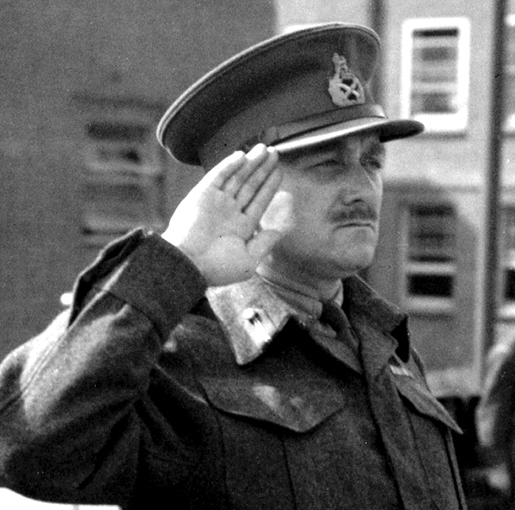 Lieutenant-General Charles Foulkes
Lieutenant-General Charles FoulkesStories circulated that the surviving 228 Georgians would not have to return to the USSR. But, if the promise was made, it was revoked over the course of the next few weeks and the surviving Georgians were dispatched to their home country.
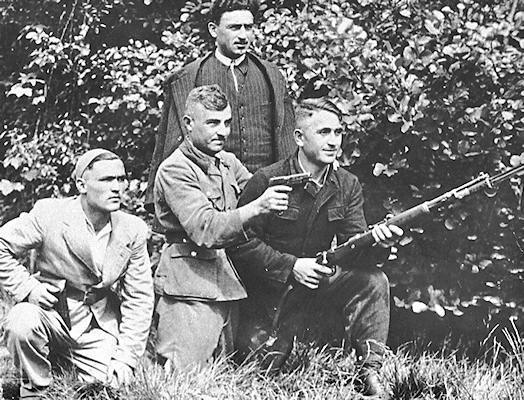
The Georgians lie buried in a ceremonial cemetery at the Hogeberg near Oudeschild. The survivors may have feared facing the same fate as most Soviet collaborators: forced repatriation, under the terms of the Yalta Conference, often followed by incarceration and banishment and, for officers, execution. The 228 Georgians who survived by hiding from the German troops in coastal minefields, or who were concealed by Texel farmers, were turned over to Soviet authorities.
After arrival at a collection camp in the Soviet Union, 26 Georgians were singled out and banished together with their families and nearly all others disappeared into Stalin’s Gulags. Those still alive in the mid-1950s were rehabilitated and allowed to return home.
Until 1991, the ambassador of the Soviet Union to the Netherlands visited the graves of the Georgians on 4 May every year, and, at least, during the latter visits, called the Georgians “Heroes of the Soviet Union.” On 4 May 2005, Mikheil Saakashvili visited the graves for the first time as the president of independent Georgia.
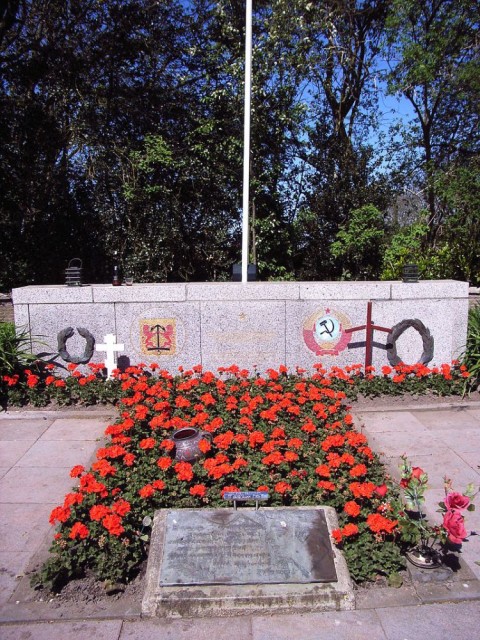 The monument to remember the uprising, image by Inyucho CC-BY 2.0
The monument to remember the uprising, image by Inyucho CC-BY 2.0The German dead were initially buried in a part of the general cemetery in Den Burg. In 1949 they found their final resting place at Ysselsteyn military cemetery, Limburg province, the Netherlands. The cemetery is administered by the German War Graves Commission.
A permanent exhibition dedicated to these events can be found “in a corner” of the Aeronautical Museum at Texel International Airport.
These events prolonged the war in Texel by 12 days.
Images: Wikipedia / Bundesarchiv / Flickr – All CC-BY

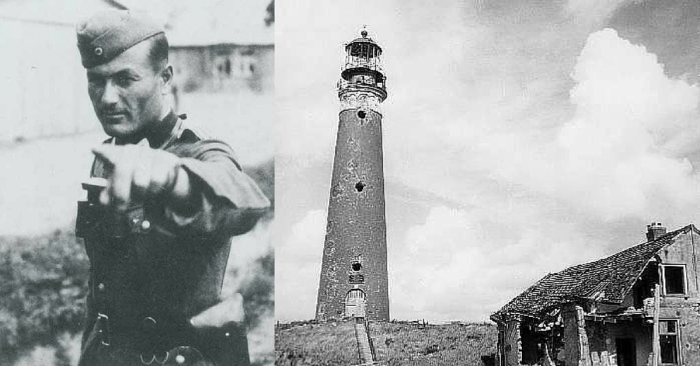
Δεν υπάρχουν σχόλια:
Δημοσίευση σχολίου